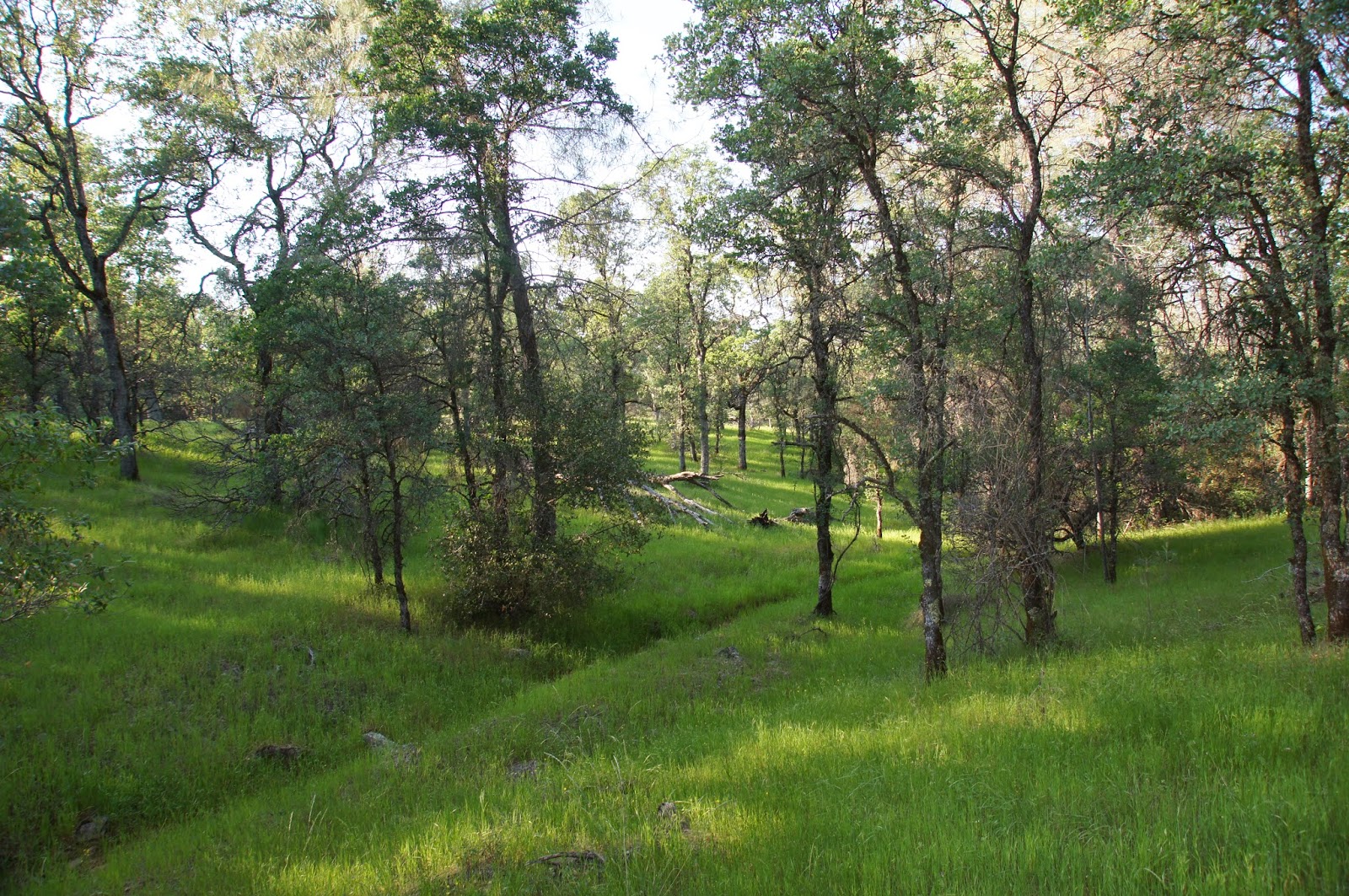Date: July, 2013
Place: Yolo Bypass Wildlife Area, West Sacramento, California
Coordinates: 38.563261, -121.636255
Link to
map, at the Yolo Basin Foundation site. We parked at stop B and hiked around the ponds. Length of our trail: about 1.5 miles.
Difficulty: easy
The Yolo Bypass has been bypassed by us so many times on our way to and from Sacramento. We've seen the roadside sign. We knew it was there. We had the interest. It's just that ... Well, no good excuses here. Finally, last summer, we made the plan, picked up my sister K at West Sacramento, and drove to the Yolo Bypass Wildlife Area.
 |
| Still flooded in July |
We were the only people there. It was very peaceful. Would have been quiet too except for I-80 so close (and for two very chatty chikas in company).
 |
| So close, yet seems out of place: California's capital's skyline. |
I didn't expect to see many flowers there, and indeed, only a few species were blooming. But those few were all around. This one in particular:
 |
| Toothpickweed (Ammi visnaga), non-native |
I was mesmerized by theses huge inflorescences, many of which were encased in silk shrouds and crawling with armies of tiny red bugs that I didn't identify (yet). I liked the intricate look of the mature inflorescence that has gone to seeds.
 |
| Toothpickweed (Ammi visnaga), non-native |
It was hot and sunny, and the trail side was decorated with little sunshines of its own:
 |
| Common Sunflower (Helianthus annuus) |
The low yield of flowers was expected at this time of year. Out main goal was to see birds. Of these, there were plenty,
 |
| White-faced Ibis |
both above:
 |
Caspian Tern
|
And below:
 |
Western Meadowlark
|
Park of the area is cultivated. Rice is a crop compatible with wetland wildlife.
 |
| A growing rice field at the Yolo Bypass Wildlife Area |
And when the field is empty, the flooded mud attracts shore birds.
They aren't very conspicuous, these little guys. So here's a close-up:
 |
| Western Sandpiper |
The water in the fields is manages through an array of canals. These too are home for birds, most commonly, egrets.
During hunting season (fall), much of the area is closed for hiking. There are lists of how many water fowl are hunted there during the season. When we were there the ponds were largely empty. Nothing but a few mallards here and there. Great for reflection photography, though ...
Tule and cattail are the habitat of many little birds that are mostly being heard rather than seen. Occasionally, though, we got lucky.
 |
| American Goldfinch, male |
And not always just with birds.
 |
| White Cabbage Butterfly |
Common, but pretty nonetheless: the ever-present cowbird. Even without the cows.
 |
| Brown-headed Cowbird, male |
We took out time walking around the ponds, enjoying the company and the discovery of a new place. After the walk we did on of the auto tours to explore some more. The potential of this place in terms of wildlife viewing is huge, we were simply visiting during summer, which is the slow season there. There's less water and much fewer birds. And it is very hot, too. In fact, I was slow to write this post because I was hoping to return for another visit this winter, which didn't happen. Still, we had a very nice walk around the ponds there, and we did see quite a few summer birds. And even some flowers. All and all, it was a very enjoyable summer hike.
 |
| Swainson's Hawk |
















































